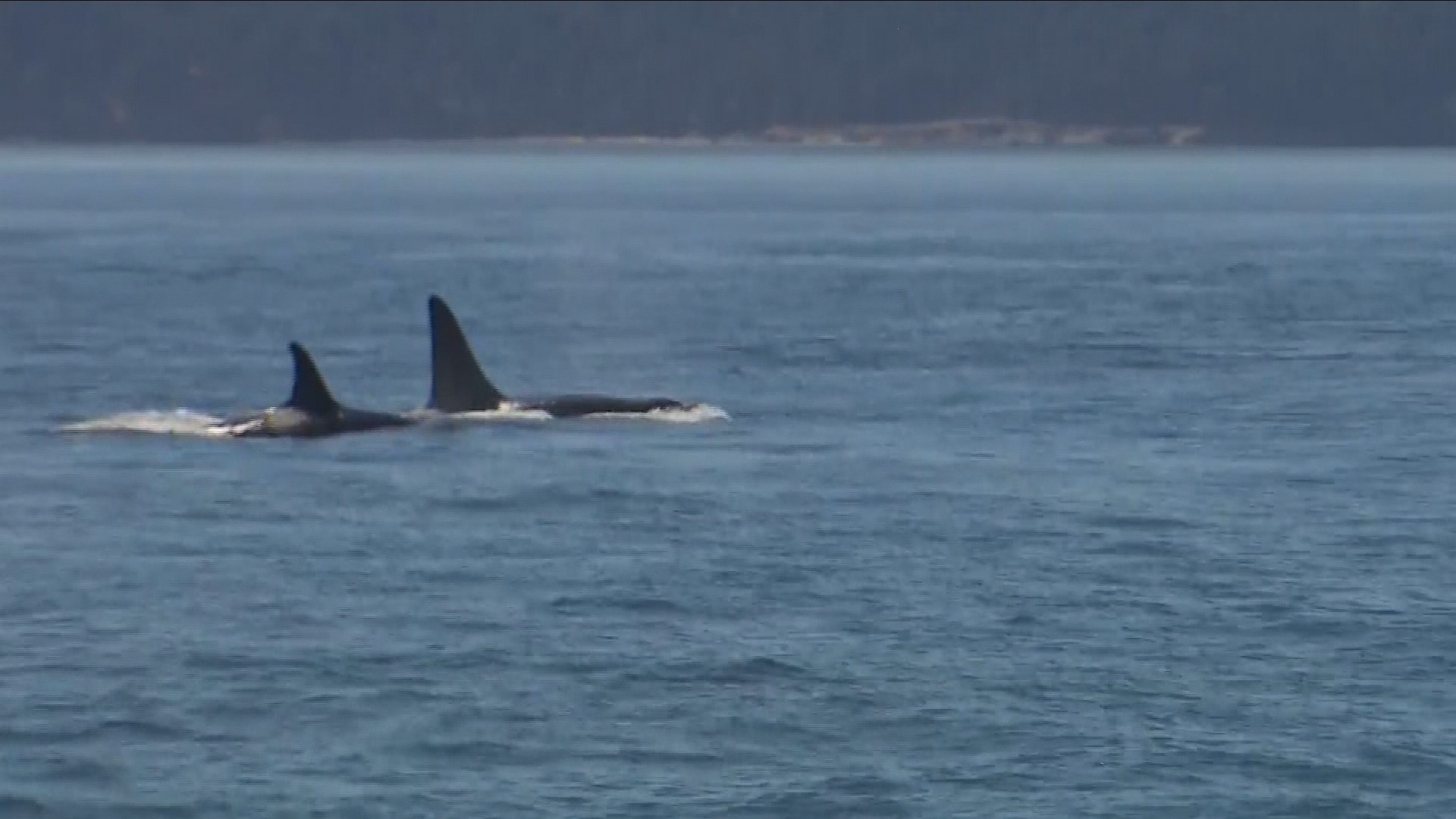OFF SAN JUAN ISLAND, Wash. -- Tracking the Southern Resident orcas can take a while, covering 100 nautical miles and hours of searching. Within minutes, however, the empty water filled with boats Friday afternoon.
"I'm mostly interested in that one on the inside that came around a minute ago – ran kind of through the path," said Washington Department of Fish and Wildlife Sgt. Russ Mullins.
He points at one of a dozen boats gathered near a pod of orcas west of San Juan Island. Department of Fish and Wildlife and NOAA are running whale watching patrols.
WDFW will run 60 patrol days this summer. NOAA plans 30 patrol days. Each agency patrol day includes two officers for 10 hours.
The Southern Resident orcas have four new calves that have survived a year. It's been two years since a calf has survived that long.
Wildlife officials hope it's a rebound, and one they plan to protect.
"That boat right there, they did exactly what they're supposed to do. They backed out where the whales were coming through. They did the right thing," explained NOAA Officer Ryan Martin.
The excitement sometimes gets the best of good judgment.
"One boat absolutely can make a difference. All it takes is one high speed prop strike and an animal can be mortally wounded," Sgt. Mullins said.
Boat traffic can also separate the calves from their mothers and chase away all of their food. When whales don't get enough prey, they metabolize energy from their blubber where toxins are stored. That causes higher mortality rates.
Officers want boats 200 yards away from the whales. So far, they've only written a handful of citations and hope not to write any more.
The fine is $300 for a recreational boat and $500 for commercial.


